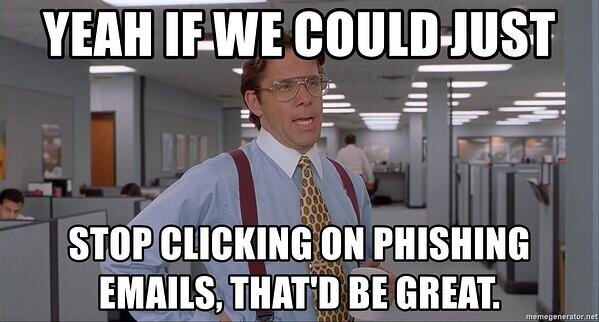We are grateful to announce that SPOT is partnering with WhiteWater Midstream, for their upcoming Martin County Expansion project, focusing on traceability and data management.
This project will start off at the pipe mill in Alabama and then move to Texas for work on the right of way (ROW.) SPOT staff will be on-site at the mill to apply jeepable labels for identification. This will allow users in the field to access the asset data using SPOT.
Once all assets are barcoded they will be shipped to the lay-down site in Texas where SPOT will have on-site training to assist field users. Some of the key features they will be trained on include, but are not limited to:
Project Progress
Material Tracking
MTR Association & Review
DABS at the mill and yard

We’ve all been there: desperately needing to make a call, send a text, or figure out where we are on the map, but there’s no service. You have exactly zero bars. There’s not a cell tower for miles and your phone can’t pick up a signal.
For the majority of tracking apps, this presents a massive problem. Being dependent on cell service when it’s not available is the same as not having the app at all. This leaves you with no choice but to use a loose piece of paper (from the backseat of your car) and a pen (that may or may not have enough ink) and handwrite each and every detail from every pipe that is under your management. Not only is it a painstaking process, but it’ll likely be full of errors by the time it reaches your boss for review. And even if you got it all right, you’re now behind schedule.
Behold… SPOT.
Let’s get technical for a minute. SPOT is what we call a “native app.” That means that it has been specifically designed to function on your phone regardless of whether it is connected to the internet. And that’s a big deal. Because SPOT does not need wifi or cellular signal to capture data, you can literally take it to any project site and collect your data quickly and without error.
SPOT’s offline capabilities allow it to operate as though it were in fact online. It takes pictures, records data, and stores all the information you captured while in a remote location and then, when a signal is available, automatically uploads the previously collected information and makes it immediately available to anyone with access to that project’s profile.
This is a game-changer. For you, your employees, and your project, there’s no other tool that can track, organize, and store as much data as quickly as simply taking a picture on your phone. Our training is comprehensive, the tool is intuitive, and the result is more information in less time.
What are you waiting for? Let SPOT revolutionize the way you work.

At SPOT, we keep the security of our client’s data at the forefront of our attention. It is paramount that our customers know that their company’s information is as safe and secure as possible. And in order to preserve that safety, we have gone to extreme lengths to ensure that what data we are responsible for collecting and therefore holding, is safeguarded with the most comprehensive measures.

Below is an article, published by Digital Guardian, that explains the importance of cyber security as well as the challenges and how to manage it.
A DEFINITION OF CYBER SECURITY
Cyber security refers to the body of technologies, processes, and practices designed to protect networks, devices, programs, and data from attack, damage, or unauthorized access. Cyber security may also be referred to as information technology security.
THE IMPORTANCE OF CYBER SECURITY
Cyber security is important because the government, military, corporate, financial, and medical organizations collect, process, and store unprecedented amounts of data on computers and other devices. A significant portion of that data can be sensitive information, whether that be intellectual property, financial data, personal information, or other types of data for which unauthorized access or exposure could have negative consequences. Organizations transmit sensitive data across networks and to other devices in the course of doing business, and cyber security describes the discipline dedicated to protecting that information and the systems used to process or store it. As the volume and sophistication of cyber attacks grow, companies and organizations, especially those that are tasked with safeguarding information relating to national security, health, or financial records, need to take steps to protect their sensitive business and personnel information. As early as March 2013, the nation’s top intelligence officials cautioned that cyber attacks and digital spying are the top threat to national security, eclipsing even terrorism.
CHALLENGES OF CYBER SECURITY
For effective cyber security, an organization needs to coordinate its efforts throughout its entire information system. Elements of cyber encompass all of the following:
- Network security: The process of protecting the network from unwanted users, attacks and intrusions.
- Application security: Apps require constant updates and testing to ensure these programs are secure from attacks.
- Endpoint security: Remote access is a necessary part of business, but can also be a weak point for data. Endpoint security is the process of protecting remote access to a company’s network.
- Data security: Inside of networks and applications is data. Protecting company and customer information is a separate layer of security.
- Identity management: Essentially, this is a process of understanding the access every individual has in an organization.
- Database and infrastructure security: Everything in a network involves databases and physical equipment. Protecting these devices is equally important.
- Cloud security: Many files are in digital environments or “the cloud”. Protecting data in a 100% online environment presents a large amount of challenges.
- Security for mobile devices: Cell phones and tablets involve virtually every type of security challenge in and of themselves.
- Disaster recovery/business continuity planning: In the event of a security breach, natural disaster or other event data must be protected and business must go on. For this, you’ll need a plan. End-user education: Users may be employees accessing the network or customers logging on to a company app. Educating good habits (password changes and having a strong password, 2-factor authentication, etc.) is an important part of cybersecurity.
The most difficult challenge in cyber security is the ever-evolving nature of security risks themselves. Traditionally, organizations and the government have focused most of their cyber security resources on perimeter security to protect only their most crucial system components and defend against known threats. Today, this approach is insufficient, as the threats advance and change more quickly than organizations can keep up with. As a result, advisory organizations promote more proactive and adaptive approaches to cyber security. Similarly, the National Institute of Standards and Technology (NIST) issued guidelines in its risk assessment framework that recommend a shift toward continuous monitoring and real-time assessments, a data-focused approach to security as opposed to the traditional perimeter-based model.
MANAGING CYBER SECURITY
The National Cyber Security Alliance, through SafeOnline.org, recommends a top-down approach to cyber security in which corporate management leads the charge in prioritizing cyber security management across all business practices. NCSA advises that companies must be prepared to “respond to the inevitable cyber incident, restore normal operations, and ensure that company assets and the company’s reputation are protected.” NCSA’s guidelines for conducting cyber risk assessments focus on three key areas: identifying your organization’s “crown jewels,” or your most valuable information requiring protection; identifying the threats and risks facing that information; and outlining the damage your organization would incur should that data be lost or wrongfully exposed. Cyber risk assessments should also consider any regulations that impact the way your company collects, stores, and secures data, such as PCI-DSS, HIPAA, SOX, FISMA, and others. Following a cyber risk assessment, develop and implement a plan to mitigate cyber risk, protect the “crown jewels” outlined in your assessment, and effectively detect and respond to security incidents. This plan should encompass both the processes and technologies required to build a mature cyber security program. An ever-evolving field, cyber security best practices must evolve to accommodate the increasingly sophisticated attacks carried out by attackers. Combining sound cyber security measures with an educated and security-minded employee base provides the best defense against cyber criminals attempting to gain access to your company’s sensitive data. While it may seem like a daunting task, start small and focus on your most sensitive data, scaling your efforts as your cyber program matures.
*This article was written by Juliana De Groot and originally posted on Monday, March 14, 2022
Tornado season is upon us here in the South! We have already experienced two severe weather and tornado alerts in the last two weeks! If you are originally from an area that experiences tornadoes then you probably already know how to prepare when you hear these warnings but if you are new to these kinds of alerts it can be overwhelming. A watch can quickly go to a warning status and it is important to know the differences.
Per the National Weather Service:
Tornado Watch: Be Prepared! Tornadoes are possible in and near the watch area. Review and discuss your emergency plans and check supplies and your safe room. Be ready to act quickly if a warning is issued or you suspect a tornado is approaching. Acting early helps to save lives! Watches are issued by the Storm Prediction Center for counties where tornadoes may occur. The watch area is typically large, covering numerous counties or even states.
Tornado Warning: Take Action! A tornado has been sighted or indicated by weather radar. There is imminent danger to life and property. Move to an interior room on the lowest floor of a sturdy building. Avoid windows. If in a mobile home, a vehicle, or outdoors, move to the closest substantial shelter and protect yourself from flying debris. Warnings are issued by your local forecast office. Warnings typically encompass a much smaller area (around the size of a city or small county) that may be impacted by a tornado identified by a forecaster on radar or by a trained spotter/law enforcement who is watching the storm.
This seems easy enough to remember but when those severe weather emergency texts start chiming in on everyone’s phones and sirens are going off, it can easily be forgotten and confusion can occur. Thankfully the Normal Fire Department, in Normal, IL, has helped make an analogy back in 2021 but it has resonated well with a lot of people:

Whatever you use to remember the difference between ‘Watch’ and ‘Warning’, always be aware of the weather in your area and stay safe!
Guess who’s back, back again. SPOT is back, tell a friend! Well, we never left but our website is back with a new and improved look! You might have seen a post early this week announcing our new website and now here is another sign, if you’re into that sort of thing, to go check it out! See all the services we provide, meet our team, and more!
We really got down to business with this layout, clear and concise on what we do and who we are! Our new look is simple, yet informative. Timeless yet on-trend. But still keeping what you have come to know and love about SPOT the main focus: Your data. Your way.
That’s it, all you need to know about us, now let us meet you and see how we can help on your next project! Email, name, and number are all the information you need to submit on our website and someone from the SPOT team will reach out. TTYS! (Talk To You Soon, not a trend anymore? Whoops, good thing our website is!)